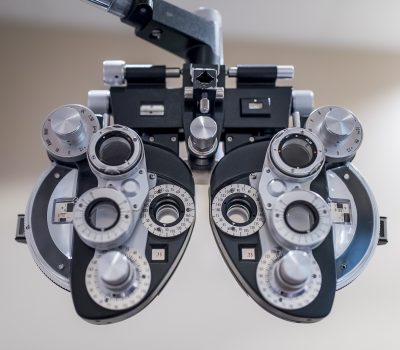What is Glaucoma

Glaucoma is group of diseases that affect the optic nerves. It impacts your peripheral vision, and in the worst case scenario, it can lead to complete and irreversible loss of vision. Worldwide, glaucoma is the third most common cause of blindness.
Glaucoma can creep up on you — you might not notice any symptoms in the early stages. However, over time your vision will begin to deteriorate. There’s no cure for glaucoma, but your ophthalmologist can provide glaucoma treatment that will slow down the disease’s progress.
If glaucoma leads to vision loss, it unfortunately cannot be reversed. This is why it is important to have regular eye checks with your glaucoma specialist in Adelaide, as this can help in the prevention of glaucoma.
What are the underlying causes of glaucoma?
Excessive eye pressure is the underlying cause of glaucoma.
The eye has a natural, healthy level of pressure, known as intraocular pressure (IOP). However, this can increase to damaging levels if the transparent fluid (aqueous humour) that is naturally produced at the back of the eye is not able to exit. If the IOP rises too high, the optic nerve can be damaged.
Eye specialists are not certain what causes eye pressure to increase. However, there are a number of factors that are believed to contribute to a rise in IOP and the onset of glaucoma:
- Blocking or clogging of the drainage channels in the cornea and iris through which fluid normally exits the eye;
- Reduced blood flow to the optic nerve;
- The use of anti-inflammatory drugs, such as corticosteroids, commonly used to treat conditions such as rheumatoid arthritis, asthma, allergies and other conditions;
- The use of dilating eye drops.
Different types of glaucoma
There are two major types of glaucoma:
Open-Angle Glaucoma
This is the most common type of glaucoma. As it is painless, it can begin to affect the vision without any warning signs or symptoms. As the condition worsens, it impacts on peripheral vision in both eyes, resulting in blind spots. In the advanced stages, it can lead to tunnel vision.
However, if detected early enough, open-angle glaucoma will usually respond well to glaucoma treatment.
Angle-Closure (Acute) Glaucoma
This is a severely painful variety of the disease and can cause severe pain in the eye, headache, nausea, vomiting and significant blurring of vision. Acute angle closure glaucoma can lead to permanent blindness if not detected and treated early.
Acute angle closure glaucoma is caused by abrupt blocking of the drainage channels in the eye through which fluid normally exits the eye. This results in rapid buildup of fluid, leading to a severe increase in pressure in the eye.
What are the symptoms of glaucoma?
Glaucoma can be a silent disease and in most cases, you may not have any symptoms until its too late. Therefore it is very important to get your eyes checked on a regular basis, especially if you have any of the risk factors as described below.
Symptoms associated with open-angle (chronic) glaucoma include:
- Growing blind spots affecting your peripheral or central vision
- Tunnel vision, where you can only see what is directly in front of you
Symptoms associated with angle-closure (acute) glaucoma include:
- Reduced or blurred vision
- Seeing rainbow-coloured halos when looking at bright lights
- Headaches or pain in the eyes
- Red eyes
- Nausea and vomiting
Who can be affected by glaucoma?
A range of factors can contribute to your likelihood of getting glaucoma. These can include your personal and family medical history, as well as your age and ethnicity.
The people who are most likely to be affected by glaucoma are (risk factors):
- Adults aged over 40
- Anyone with a family history of glaucoma
- Diabetes
- People with Hispanic, African, or Asian heritage
- Anyone who is near-sighted or far-sighted
- High eye pressure (IOP)
- If you have corneas with a thin centre
- Thinning of the optic nerve
- If you have previously suffered an eye injury
- If you have used steroids over an extended period
How do you get a glaucoma diagnosis?
If you experience any of the symptoms described above, you should arrange a consultation with an ophthalmologist as soon as possible.
They will undertake an eye examination to ascertain which type of glaucoma you might be at risk of, as well as what sort of glaucoma treatment might be appropriate.
Some of the tests your glaucoma eye specialist might conduct include:
- Tonometry, to measure your intraocular pressure (IOP)
- Visual field test, to ascertain if you have lost any peripheral vision
- Pachymetry, to measure the thickness of your cornea
- Gonioscopy, to ascertain the drainage channels of your eyes
- Dilated eye examination and imaging tests, to test if there has been any damage to the optic nerve
What happens in glaucoma treatment?
Although glaucoma cannot be reversed, if it is recognised early, vision loss can be prevented or delayed.
Glaucoma treatment is generally targetted to reduce eye pressure. There are a variety of treatments that can be implemented individually or in combination. These can include prescription eye drops, oral medicines or laser therapy. Glaucoma surgery can also be an option.
Prevention of glaucoma
The best way to prevent or slow the onset of glaucoma is through having regular checkups with an eye specialist. Early detection in conjunction with glaucoma treatment or glaucoma surgery can mean that the condition does not worsen (although it will not restore any sight that has already been lost)
Dr. Swati Sinkar provides glaucoma treatment in Adelaide. If you are experiencing any symptoms associated with glaucoma, or are suffering from any form of vision loss, make an appointment at Dr Swati’s consulting rooms in North Adelaide as soon as possible.



